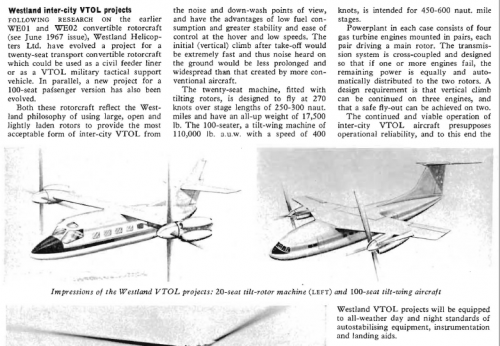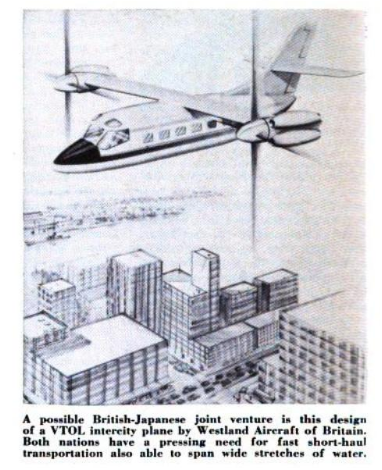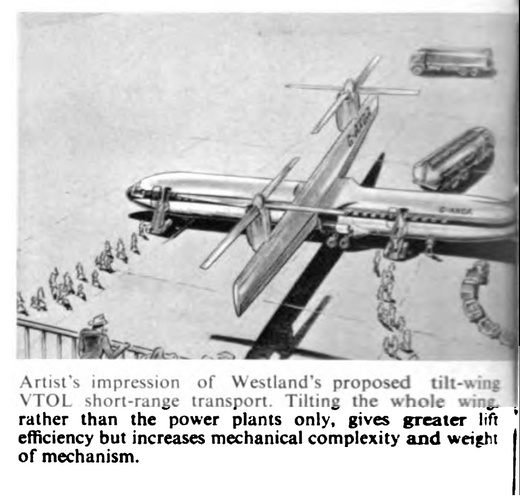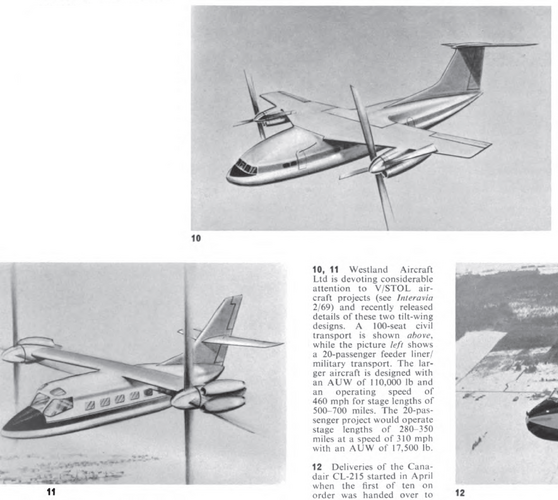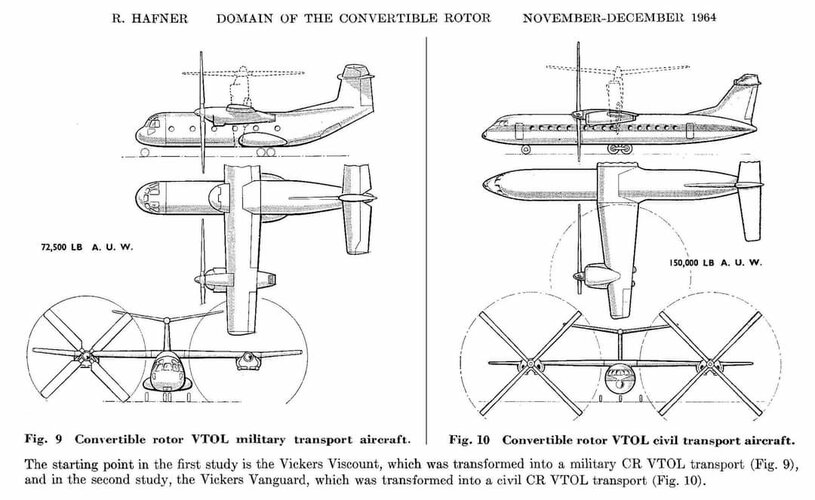You are using an out of date browser. It may not display this or other websites correctly.
You should upgrade or use an alternative browser.
You should upgrade or use an alternative browser.
Westland VTOL convertiplane projects
- Thread starter overscan (PaulMM)
- Start date
- Joined
- 9 October 2009
- Messages
- 21,973
- Reaction score
- 13,631
It may be more accurate to say that Japan was interested in a licensed produced development of the design.
- Joined
- 25 January 2020
- Messages
- 1,279
- Reaction score
- 1,954
Were any of these offered to the RAF or RN or were these strictly civil types?
If it was ever considered as an option for the WSRA studies as WG.21 then the Company archive has little information to support that view. The WSRA project was to investigate a VTOL configuration that would be able to achieve fixed wing ground attack fighter speeds approaching 500 kts. What I can say is that we have a presentation slide image that shows various cockpit configurations and one of those is for a "Bronco" style approach. No other information was submitted under cover of the contract but if one assumes that the "Bronco" style cockpit was matched with "Bronco" like maximum speeds then the image shown may have been an option considered early but never followed through. Out of interest Warton and Kingston both submitted concepts for the same requirement at the same time.Aircraft Engineering Sept 1968
Could this be WG.21?
Well now, a small niggle in my head eventually matured as a need to take a look at artwork that was prepared for the 2023 Henson and Stringfellow lecture, held in Yeovil, on the topic of the modern tilt rotor. This confirms that a derivative of WE.01 was drawn as a ground attack craft and it is essentially this aircraft. It is not WG.21 and has no link to that study. Further, I do not believe that much/any detailed analysis was done and we certainly don't have any such background data in the archive. it is shown having an expected maximum speed of 330 kts. There were a number of derivatives of the WE.01 demonstrator developed but none were clearly separated by an identifier. All I can offer is that the configuration shown was derived from WE.01 and would have assumed re-use of rotors, gearboxes and engines.Aircraft Engineering Sept 1968
Could this be WG.21?

Log into Facebook
Log into Facebook to start sharing and connecting with your friends, family, and people you know.
 www.facebook.com
www.facebook.com
This is a model of the "Sea Control Ship" organic tilt rotor submitted as a proposal to the US Navy. It derives closely from the final derivative of the WE01 concept. Nice image which seems better than those available in the Yeovil archive. A series of images showing the fold sequence can be found in the Westland brochure: here it is in mid-fold configuration. Around the same time work was underway to understand how the contemporary RN's ASW requirement might best be satisfied and tilt rotor options did figure. Some folded in the way shown in the image above, others rotated the whole wing to lie along the fuselage, as Osprey does.
Many thanks for the identification, an interesting looking design. I noticed the US. star has been added to the print as looks rather 'off' (im assuming the original model being in RN. markings) Are there any drawings of the proposal ? It looks quite modelable perhaps from an MU-2 as a basis
cheers, Joe
cheers, Joe
Last edited:
There are some drawings in the archive depicting it with RN markings applied. The model is no where to be found (it likely went home with someone when the proposal foundered). Most likely the model was made by F E Phelps (now the Curvature Group) but I have asked if I might see their records to be told that there are none! I had always assumed that the US markings were on the model rather than added afterwards through artwork. MU-2 was at one time suggested as providing a fuselage for a demonstrator but I don't think that the design was configured to mimic the MU-2 fuselage as such. The size, shape, performance etc of the WE01 Stage III (which this is) was derived from first principles and only afterwards was the similarity noticed. The new Westland book includes additional information.
- Joined
- 26 May 2006
- Messages
- 34,901
- Reaction score
- 15,761
Hi,
here is a drawings to Westland VTOL aircraft projects,the first was based on Vickers
Viscount and the other was based on Vickers Vanguard.
The file itself.
Attachments
Similar threads
-
-
-
Sikorsky S-61 prototypes, projects and license builds
- Started by Caravellarella
- Replies: 67
-
-
Westland remotely-piloted helicopters (RPH)
- Started by Stargazer
- Replies: 7

